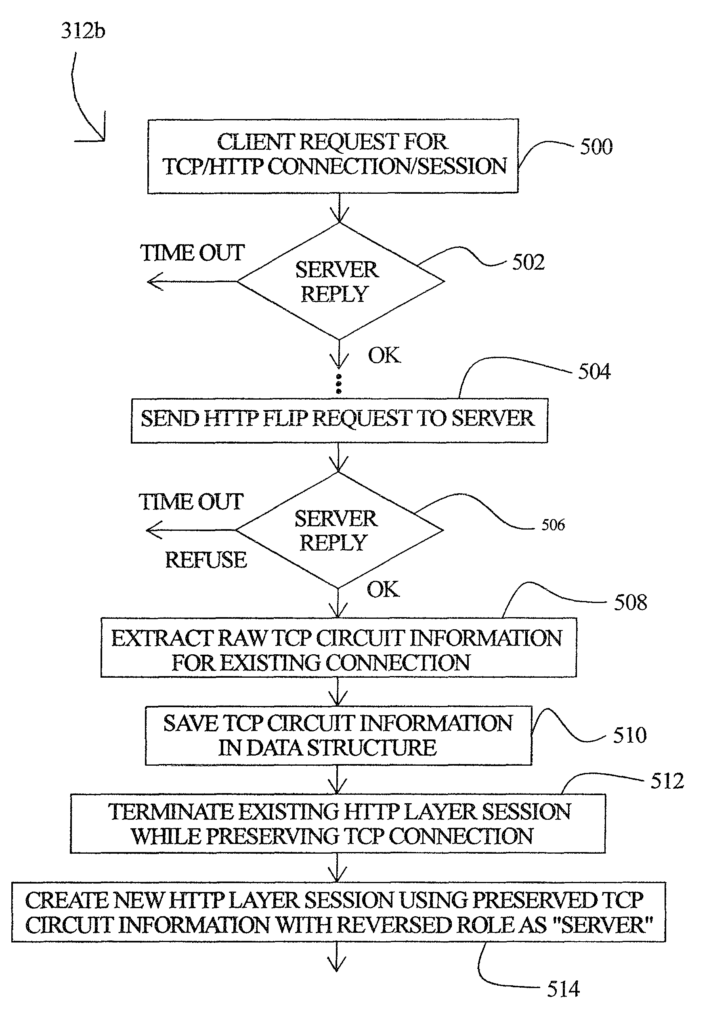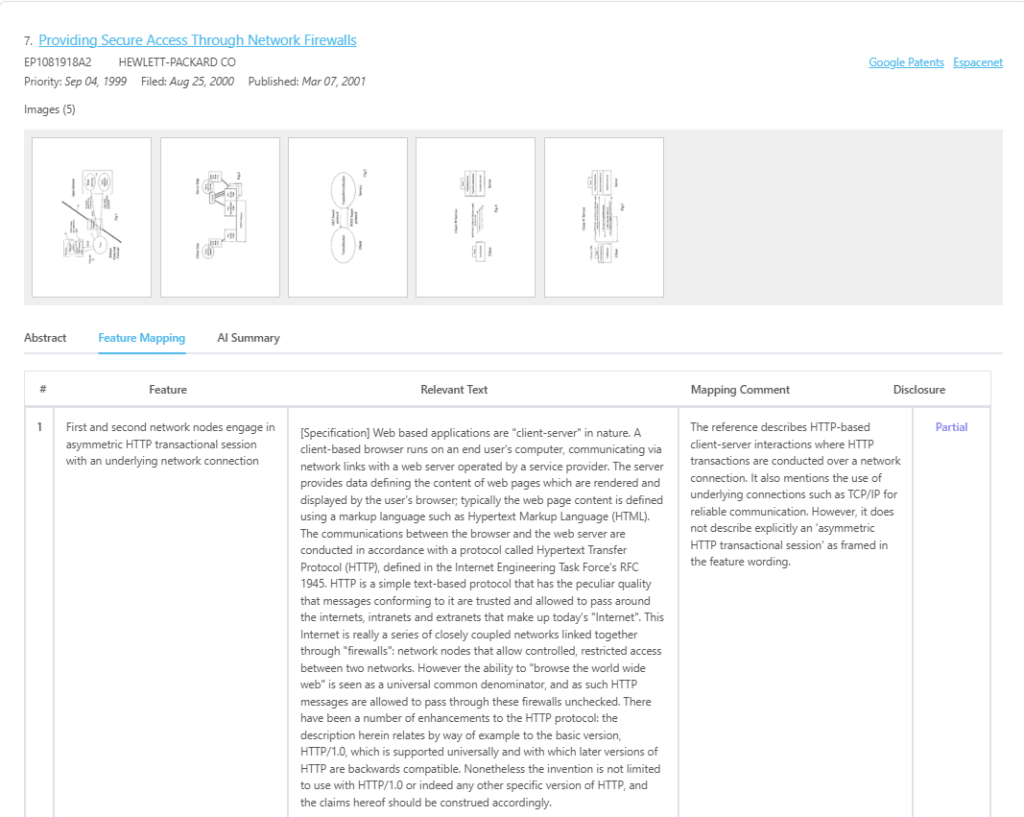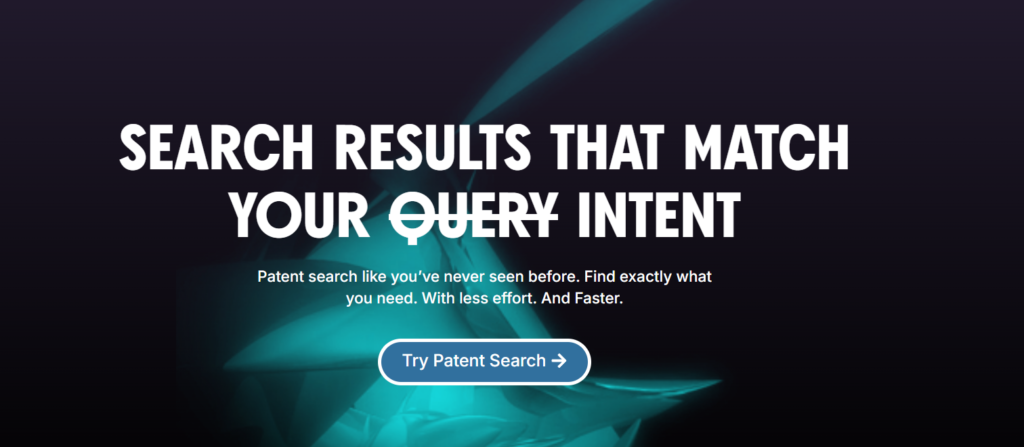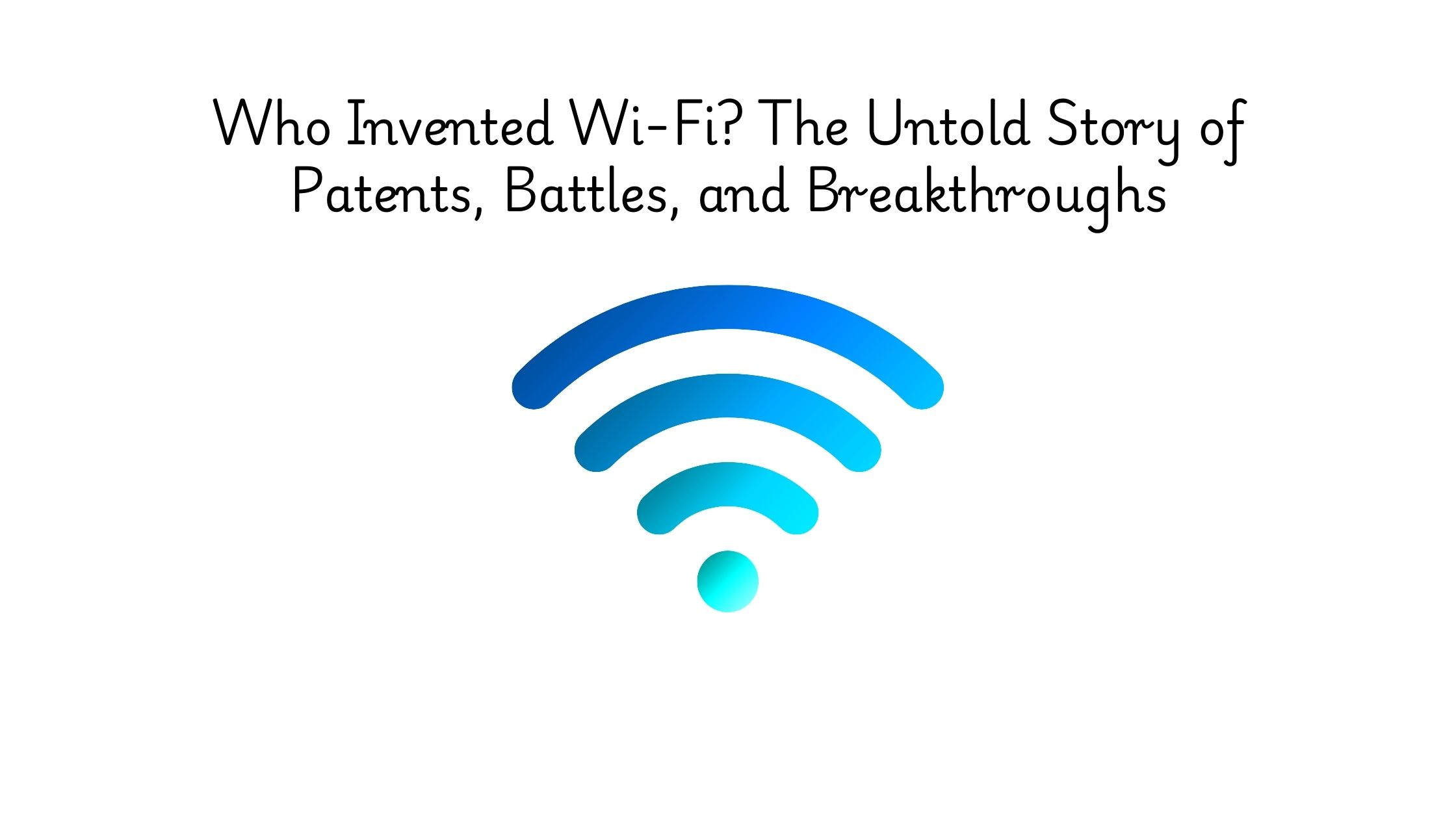Could this patent face a challenge? Patent US7756983B2, currently at the center of litigation in WebSock Global Strategies LLC v. Postman, Inc., covers key aspects of WebSocket communication—an essential technology for real-time web applications.
The implications of this case could be significant, particularly for technologies that rely on real-time communication over the web, such as APIs, cloud services, and peer-to-peer networking. Related patent analysis is a critical step in assessing the strength of this patent’s claims. If earlier inventions disclose similar role-reversal mechanisms, they could challenge the validity of US7756983B2.
This is where Global Patent Search comes in, helping legal teams uncover existing innovations that may challenge a patent’s claims.
In this article, we will break down US7756983B2, identify its core features, and explore potential related patents that could impact the case. Let’s dive in
Understanding Patent US7756983B2
The Patent US7756983B2 covers a method for enabling symmetrical bi-directional communication over HTTP. Traditionally, HTTP communication follows an asymmetric model where a client initiates a request, and a server responds.

Source: US7756983B2
This patent introduces a mechanism that allows network nodes to dynamically switch roles, enabling peer-to-peer communication over TCP/IP networks without relying on inefficient polling techniques. Its key features are:
- Dynamic role reversal – Allows HTTP clients and servers to switch roles, enabling both to initiate and respond to requests.
- Persistent TCP/IP connection – Maintains an active connection even after an HTTP session ends, reducing handshake overhead.
- Firewall & NAT traversal – Uses an intermediary node or relay to establish peer-to-peer connections across restricted networks.
- Polling-free communication – Eliminates inefficient client polling, allowing servers to send updates without waiting for a request.
With this understanding, let us now explore five potential related patent references that share key features with US7756983B2.
Potential Related Patent References for US7756983B2
#1. US7016942B1
This reference describes a dynamic hosting system where a client initially connects to a static server and later transitions into a host role for other clients. This allows flexible role reversals in network communication, reducing server load and enabling peer-based interactions, similar to the claims in US7756983B2.
Why this Qualifies as Potential Related Patent?
- Client-server communication: Describes an asymmetric connection where clients initiate communication with a static server.
- Dynamic role switching: Explains how a client transitions into a host, effectively reversing its role.
- Networked peer communication: Supports data transfer between clients and servers, similar to bi-directional communication.
Feature Mapping Results
| Feature | Disclosure Status |
| First and second network nodes engage in an asymmetric HTTP transactional session | Partially disclosed |
| Network nodes initially enact distinct roles of HTTP server and HTTP client | Partially disclosed |
| The HTTP server relays data while the HTTP client initiates requests | Fully disclosed |
| The asymmetric HTTP transactional session is terminated while maintaining the underlying network connection | Partially disclosed |
| The first and second network nodes negotiate a transactional role reversal | Partially disclosed |
| The network nodes communicate under a reversed asymmetric transactional protocol where each node enacts the initial role of the other | Partially disclosed |
Key Excerpt from the Reference:
“Dynamic hosting 37 is a method where a computer connects through a network as a client to a static server, where there are also other clients connected, and, after some duration, that client computer begins acting as a host to one or multiple client computers.”
#2. US7756983B2
This reference describes a system for enabling symmetrical bi-directional communication between network nodes by reversing the roles of HTTP clients and servers dynamically. The technology facilitates peer-to-peer HTTP communication over TCP/IP networks while maintaining an underlying network connection, aligning with the features in US7756983B2.
Why this qualifies as potential related patent?
- Client-server communication: Describes how network nodes engage in an asymmetric HTTP session with distinct client and server roles.
- Role reversal mechanism: Explains a process where an HTTP client becomes a server and vice versa.
- Maintains TCP/IP connection: The initial HTTP session is terminated, but the underlying network connection persists to support the reversed session.
Feature Mapping Results
| Feature | Disclosure Status |
| First and second network nodes engage in an asymmetric HTTP transactional session | Fully disclosed |
| Network nodes initially enact distinct roles of HTTP server and HTTP client | Fully disclosed |
| The HTTP server relays data while the HTTP client initiates requests | Fully disclosed |
| The asymmetric HTTP transactional session is terminated while maintaining the underlying network connection | Fully disclosed |
| The first and second network nodes negotiate a transactional role reversal | Fully disclosed |
| The network nodes communicate under a reversed asymmetric transactional protocol where each node enacts the initial role of the other | Fully disclosed |
| The session uses a network connection traversing hardware that enforces asymmetric communication | Partially disclosed |
Key Excerpt from the Reference:
“Network nodes engage in an asymmetric transactional session. The nodes negotiate transactional role reversal and further communication under a reversed asymmetric transactional session.”
#3. IN1602DEN2005A
This reference describes communication protocols for transmitting data across networked devices using the TCP/IP suite. It discusses how client devices interact with network storage systems, issue data requests, and receive responses, aligning with some of the features in US7756983B2.
Why this Qualifies as Potential Related Patent?
- Encapsulated network communication: The reference describes protocol layering for communication between devices, which resembles HTTP transactional sessions operating over an underlying network connection.
- Client-server interactions: Mentions request/response mechanisms where client devices request data transfers, and servers respond, indicating a client-server communication model.
- TCP/IP-based message handling: Discusses how devices exchange data over a network using protocols that enforce routing constraints, similar to how HTTP sessions operate under network constraints.
Feature Mapping Results
| Feature | Disclosure Status |
| First and second network nodes engage in an asymmetric HTTP transactional session | Partially disclosed |
Key Excerpt from the Reference:
“A set of protocols adapted to cooperate with each other is often referred to as a suite. One common suite of protocols is the TCP/IP suite and includes, among others, the IP, TCP, and UDP protocols. The Transmission Control Protocol (TCP) provides a reliable stream delivery and virtual connection service through sequenced acknowledgment and retransmission of packets when necessary.”
#4. EP1081918A2
This reference discusses network security and HTTP-based tunneling techniques for communication between clients and servers, bypassing firewalls. It details how HTTP messages are allowed through firewalls due to their universal acceptance, and how GET and POST requests facilitate bidirectional communication while maintaining the connection.
Why this qualifies as Potential Related Patent?
- Client-server HTTP interactions: Describes how web-based applications follow an HTTP-based client-server model, with the client initiating requests and the server responding, aligning with asymmetric HTTP transactions.
- HTTP tunneling for continuous connectivity: Explains how an HTTP tunnel is established and periodically closed and reopened while maintaining an active network connection.
- Firewall traversal enforcing asymmetric communication: Describes how firewalls and proxy servers enforce communication rules, impacting how clients and servers interact.
Feature Mapping Results
| Feature | Disclosure Status |
| First and second network nodes engage in an asymmetric HTTP transactional session | Partially disclosed |
| Network nodes initially enact distinct roles of HTTP server and HTTP client | Fully disclosed |
| The HTTP server relays data while the HTTP client initiates requests | Fully disclosed |
| The asymmetric HTTP transactional session is terminated while maintaining the underlying network connection | Fully disclosed |
| The session uses a network connection traversing hardware that enforces asymmetric communication | Fully disclosed |
Key Excerpt from the Reference:
“The HTTP tunnel uses the underlying simple text-based HTTP protocol to produce a reliable connection-based protocol between the TunnelSocket and TunnelServerSocket classes. The tunnel is periodically forced to close and reopen while maintaining the overall network session, preventing interruptions while traversing firewalls.”
#5. WO0158069A1
This reference describes network optimization techniques for web content delivery, specifically enhancing HTTP-based client-server interactions through caching nodes (C-nodes) and server nodes (S-nodes). It focuses on reducing latency, maintaining persistent connections, and optimizing web traffic routing for high-performance communication.
Why this qualifies as Potential Related Patent?
- Client-server roles in HTTP transactions: Discusses the traditional HTTP request-response model, with clients sending requests and servers responding with data.
- Persistent network connections: Describes keeping an underlying connection active while handling individual HTTP transactions separately, aligning with the feature of terminating an HTTP session while maintaining the network connection.
- High-speed protocol implementation: Mentions the use of optimized communication protocols between caching nodes (C-nodes) and server nodes (S-nodes), affecting HTTP efficiency.
Feature Mapping Results
| Feature | Disclosure Status |
| First and second network nodes engage in an asymmetric HTTP transactional session | Partially disclosed |
| Network nodes initially enact distinct roles of HTTP server and HTTP client | Partially disclosed |
| The HTTP server relays data while the HTTP client initiates requests | Fully disclosed |
| The asymmetric HTTP transactional session is terminated while maintaining the underlying network connection | Fully disclosed |
Key Excerpt from the Reference:
“The C-node communicates the client’s request to the chosen S-node using a specialized protocol designed to be of higher performance than the prevailing standard protocol used by the client. Persistent connections and protocol optimizations help reduce latency and enhance performance over long-distance network paths.”
Feature Comparison Table
| Feature | US11589969 | US7016942B1 | US7756983B2 | IN1602DEN2005A | EP1081918A2 | WO0158069A1 |
| First and second network nodes engage in an asymmetric HTTP transactional session | Fully disclosed | Partially disclosed | Fully disclosed | Partially disclosed | Partially disclosed | Partially disclosed |
| Network nodes initially enact distinct roles of HTTP server and HTTP client | Fully disclosed | Partially disclosed | Fully disclosed | Not disclosed | Fully disclosed | Partially disclosed |
| The HTTP server relays data while the HTTP client initiates requests | Fully disclosed | Fully disclosed | Fully disclosed | Not disclosed | Fully disclosed | Fully disclosed |
| The asymmetric HTTP transactional session is terminated while maintaining the underlying network connection | Fully disclosed | Partially disclosed | Fully disclosed | Not disclosed | Fully disclosed | Fully disclosed |
| The first and second network nodes negotiate a transactional role reversal | Fully disclosed | Partially disclosed | Fully disclosed | Not disclosed | Not disclosed | Not disclosed |
| The network nodes communicate under a reversed asymmetric transactional protocol where each node enacts the initial role of the other | Fully disclosed | Partially disclosed | Fully disclosed | Not disclosed | Not disclosed | Not disclosed |
| The session uses a network connection traversing hardware that enforces asymmetric communication | Fully disclosed | Not disclosed | Fully disclosed | Not disclosed | Fully disclosed | Not disclosed |
How to Find Related Patent Using Global Patent Search
Finding relevant related patents is crucial in evaluating the validity and enforceability of a patent under litigation. The Global Patent Search tool simplifies this process with its advanced search and feature mapping capabilities.
Here’s how to conduct an effective related patent search using GPS:
Search by Patent Number or Keywords – Enter the patent number or relevant keywords to instantly retrieve related patents, applications, and non-patent literature.
Feature Mapping – Utilize GPS’s automated feature mapping tool to compare key elements of the target patent against existing references, identifying fully disclosed, partially disclosed, or missing features.

Source: Global Patent Search
Review Matching Results – Browse through a curated list of potential related patent references that align with your criteria.
Analyze Detailed Reports – Dive into feature mapping reports to see how each reference stacks up against the patent claims.
Make Confident Decisions – Use these insights to assess novelty, refine your strategy, or build stronger legal arguments.
From IP experts to first-time researchers, Global Patent Search makes uncovering related patent fast, efficient, and insightful.
Take the Guesswork Out of Related Patent Research
Patent disputes are complex, but finding relevant related patents doesn’t have to be. The Global Patent Search tool provides:
- Instant Results – No more tedious manual searching.
- Accurate Feature Mapping – Identify key overlaps with precision.
- Data-Driven Insights– Strengthen your case with verified insights.

Ensure you have the best related patent references at your fingertips. Start your search with Global Patent Search today!
Disclaimer: The information provided in this article is for informational purposes only and should not be considered legal advice. The related patent references mentioned are surface-level results generated by our tool and do not guarantee legal significance. For a more thorough patent search, we recommend exploring Global Patent Search.




